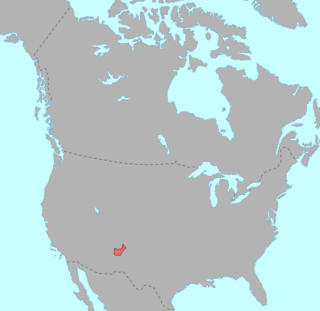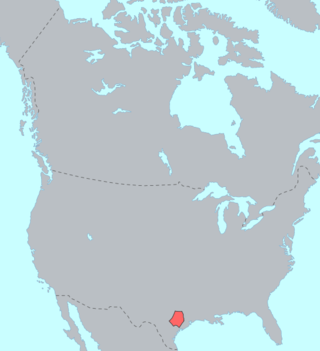Typological description
Form
Reduplication is often described phonologically in one of two ways: either (1) as reduplicated segments (sequences of consonants/vowels) or (2) as reduplicated prosodic units (syllables or moras). In addition to phonological description, reduplication often needs to be described morphologically as a reduplication of linguistic constituents (i.e. words, stems, roots). As a result, reduplication is interesting theoretically as it involves the interface between phonology and morphology.
The base is the word (or part of the word) that is to be copied. The reduplicated element is called the reduplicant, often abbreviated as RED or sometimes just R.
In reduplication, the reduplicant is most often repeated only once. However, in some languages, reduplication can occur more than once, resulting in a tripled form, and not a duple as in most reduplication. Triplication is the term for this phenomenon of copying two times. [3] Pingelapese has both forms. [4] In this article, English translations of words are shown in apostrophes:
| Basic verb | Reduplication | Triplication |
|---|---|---|
| kɔul 'to sing' | kɔukɔul 'singing' | kɔukɔukɔul 'still singing' |
| mejr 'to sleep' | mejmejr 'sleeping' | mejmejmejr 'still sleeping' |
Triplication occurs in other languages, e.g. Ewe, Shipibo, Twi, Mokilese, Min Nan (Hokkien), Stau. [3]
Sometimes gemination (i.e. the doubling of consonants or vowels) is considered to be a form of reduplication. The term dupleme has been used (after morpheme) to refer to different types of reduplication that have the same meaning.
Full and partial reduplication
Full reduplication involves a reduplication of the entire word. For example, Kham derives reciprocal forms from reflexive forms by total reduplication:
| [ɡin] | 'ourselves' | → | [ɡinɡin] | 'we (to) us' | (ɡin-ɡin) | |||
| [jaː] | 'themselves' | → | [jaːjaː] | 'they (to) them' | (jaː-jaː) | (Watters 2002) |
Another example is from Musqueam Halkomelem "dispositional" aspect formation:
| [kʼʷə́ɬ] | 'to capsize' | → | [kʼʷə́ɬkʼʷəɬ] | 'likely to capsize' | (kʼʷə́ɬ-kʼʷəɬ) | |||
| [qʷél] | 'to speak' | → | [qʷélqʷel] | 'talkative' | (qʷél-qʷel) | (Shaw 2004) |
Partial reduplication involves a reduplication of only part of the word. For example, Marshallese forms words meaning 'to wear X' by reduplicating the last consonant-vowel-consonant (CVC) sequence of a base, i.e. base+CVC:
| kagir | 'belt' | → | kagirgir | 'to wear a belt' | (kagir-gir) | |||
| takin | 'sock' | → | takinkin | 'to wear socks' | (takin-kin) | (Moravsik 1978) |
Many languages often use both full and partial reduplication, as in the Motu example below:
| Base verb | Full reduplication | Partial reduplication |
|---|---|---|
| mahuta 'to sleep' | mahutamahuta 'to sleep constantly' | mamahuta 'to sleep (plural)' |
| (mahuta-mahuta) | (ma-mahuta) |
Reduplicant position
Reduplication may be initial (i.e. prefixal), final (i.e. suffixal), or internal (i.e. infixal), e.g.
Initial reduplication in Agta (CV- prefix):
| [ɸuɾab] | 'afternoon' | → | [ɸuɸuɾab] | 'late afternoon' | (ɸu-ɸuɾab) | |||
| [ŋaŋaj] | 'a long time' | → | [ŋaŋaŋaj] | 'a long time (in years)' | (ŋa-ŋaŋaj) | (Healey 1960) |
Final reduplication in Dakota (-CCV suffix):
| [hãska] | 'tall (singular)' | → | [hãskaska] | 'tall (plural)' | (hãska-ska) | |||
| [waʃte] | 'good (singular)' | → | [waʃteʃte] | 'good (plural)' | (waʃte-ʃte) | (Shaw 1980, Marantz 1982, Albright 2002) |
Internal reduplication in Samoan (-CV- infix):
| savali | 'he/she walks' (singular) | → | savavali | 'they walk' (plural) | (sa-va-vali) | |||
| alofa | 'he/she loves' (singular) | → | alolofa | 'they love' (plural) | (a-lo-lofa) | (Moravcsik 1978, Broselow and McCarthy 1984) | ||
| le tamaloa | 'the man' (singular) [5] | → | tamaloloa | 'men' (plural) | (tama-lo-loa) |
Internal reduplication is much less common than the initial and final types.
Copying direction
A reduplicant can copy from either the left edge of a word (left-to-right copying) or from the right edge (right-to-left copying). There is a tendency for prefixing reduplicants to copy left-to-right and for suffixing reduplicants to copy right-to-left:
Initial L → R copying in Oykangand Kunjen (a Pama–Nyungan language of Australia):
| [eder] | → | [ededer] | 'rain' | (ed-eder) | ||
| [alɡal] | → | [alɡalɡal] | 'straight' | (alg-algal) |
Final R → L copying in Sirionó:
| achisia | → | achisiasia | 'I cut' | (achisia-sia) | |||
| ñimbuchao | → | ñimbuchaochao | 'to come apart' | (ñimbuchao-chao) | (McCarthy and Prince 1996) |
Copying from the other direction is possible although less common:
Initial R → L copying in Tillamook:
| [ɡaɬ] | 'eye' | → | [ɬɡaɬ] | 'eyes' | (ɬ-ɡaɬ) | |||
| [təq] | 'break' | → | [qtəq] | 'they break' | (q-təq) | (Reichard 1959) |
Final L → R copying in Chukchi:
| nute- | 'ground' | → | nutenut | 'ground (abs. sg.)' | (nute-nut) | |||
| jilʔe- | 'gopher' | → | jilʔejil | 'gopher (abs. sg.)' | (jilʔe-jil) | (Marantz 1982) |
Internal reduplication can also involve copying the beginning or end of the base. In Quileute, the first consonant of the base is copied and inserted after the first vowel of the base.
Internal L → R copying in Quileute:
| [tsiko] | 'he put it on' | → | [tsitsko] | 'he put it on (frequentative)' | (tsi-ts-ko) | |||
| [tukoːjoʔ] | 'snow' | → | [tutkoːjoʔ] | 'snow here and there' | (tu-t-ko:jo’) | (Broselow and McCarthy 1984) |
In Temiar, the last consonant of the root is copied and inserted before the medial consonant of the root.
Internal R → L copying in Temiar (an Austroasiatic language of Malaysia):
| [sluh] | 'to shoot (perfective)' | → | [shluh] | 'to shoot (continuative)' | (s-h-luh) | |||
| [slɔɡ] | 'to marry (perfective)' | → | [sɡlɔɡ] | 'to marry (continuative)' | (s-ɡ-lɔɡ) | (Broselow and McCarthy 1984, Walther 2000) |
A rare type of reduplication is found in Semai (an Austroasiatic language of Malaysia). "Expressive minor reduplication" is formed with an initial reduplicant that copies the first and last segment of the base:
| [kʉːʔ] | → | [kʔkʉːʔ] | 'to vomit' | (kʔ-kʉːʔ) | |||
| [dŋɔh] | → | [dhdŋɔh] | 'appearance of nodding constantly' | (dh-dŋɔh) | |||
| [cruhaːw] | → | [cwcruhaːw] | 'monsoon rain' | (cw-cruhaːw) | Diffloth 1973 |
Reduplication and other morphological processes
All of the examples above consist of only reduplication. However, reduplication often occurs with other phonological and morphological process, such as vowel alternation, [6] deletion, affixation of non-reduplicating material, etc.
For instance, in Tz'utujil a new '-ish' adjective form is derived from other words by suffixing the reduplicated first consonant of the base followed by the segment [oχ]. This can be written succinctly as -Coχ. Below are some examples:
- [kaq] 'red' → [kaqkoχ] 'reddish' (kaq-k-oχ)
- [qʼan] 'yellow' → [qʼanqʼoχ] 'yellowish' (qʼan-qʼ-oχ)
- [jaʔ] 'water' → [jaʔjoχ] 'watery' (jaʔ-j-oχ) (Dayley 1985)
Somali has a similar suffix that is used in forming the plural of some nouns: -aC (where C is the last consonant of the base):
- [toɡ] 'ditch' → [toɡaɡ] 'ditches' (toɡ-a-ɡ)
- [ʕad] 'lump of meat' → [ʕadad] 'lumps of meat' (ʕad-a-d)
- [wɪːl] 'boy' → [wɪːlal] 'boys' (wɪːl-a-l) (Abraham 1964)
This combination of reduplication and affixation is commonly referred to as fixed-segment reduplication.
In Tohono O'odham initial reduplication also involves gemination of the first consonant in the distributive plural and in repetitive verbs:
- [nowiu] 'ox' → [nonnowiu] 'ox (distributive)' (no-n-nowiu)
- [hódai] 'rock' → [hohhodai] 'rock (distributive)' (ho-h-hodai)
- [kow] 'dig out of ground (unitative)' → [kokkow] 'dig out of ground (repetitive)' (ko-k-kow)
- [ɡɨw] 'hit (unitative)' → [ɡɨɡɡɨw] 'hit (repetitive)' (ɡɨ-ɡ-ɡɨw) (Haugen forthcoming)
Sometimes gemination can be analyzed as a type of reduplication.[ citation needed ]
| | This section needs expansion. You can help by adding to it. (May 2008) |
Phonological processes, environment, and reduplicant-base relations
| | This section needs expansion. You can help by adding to it. (December 2009) |
Function and meaning
In the Malayo-Polynesian family, reduplication is used to form plurals (among many other functions):
- Malay rumah "house", rumah-rumah "houses".
In pre-1972 Indonesian and Malaysian orthography, 2 was shorthand for the reduplication that forms plurals: orang "person", orang-orang or orang2 "people". [8] This orthography has resurfaced widely in text messaging and other forms of electronic communication.
The Nama language uses reduplication to increase the force of a verb: go, "look;", go-go "examine with attention".
Chinese also uses reduplication: 人rén for "person", 人人rénrén for "everybody". Japanese does it too: 時toki "time", tokidoki時々 "sometimes, from time to time". Both languages can use a special written iteration mark 々 to indicate reduplication, although in Chinese the iteration mark is no longer used in standard writing and is often found only in calligraphy.
Indo-European languages formerly used reduplication to form a number of verb forms, especially in the preterite or perfect. In the older Indo-European languages, many such verbs survive:
- spondeo, spopondi (Latin, "I vow, I vowed")
- λείπω, λέλοιπα (Greek, "I leave, I left")
- δέρκομαι, δέδορκα (Greek, "I see, I saw"; these Greek examples exhibit ablaut as well as reduplication)
- háitan, haíháit (Gothic, "to name, I named")
Those forms do not survive in Modern English but existed in its parent Germanic languages. Many verbs in the Indo-European languages exhibit reduplication in the present stem, rather than the perfect stem, often with a different vowel from that used for the perfect: Latin gigno, genui ("I beget, I begat") and Greek τίθημι, ἔθηκα, τέθηκα (I place, I placed, I have placed). Other Indo-European verbs used reduplication as a derivational process: compare Latin sto ("I stand") and sisto ("I remain"). All of those Indo-European inherited reduplicating forms are subject to reduction by other phonological laws.
Reduplication can be used to refer to the most prototypical instance of a word's meaning. In such a case, it is called contrastive focus reduplication. Finnish colloquial speech uses the process; nouns can be reduplicated to indicate genuinity, completeness, originality and being uncomplicated, as opposed to being fake, incomplete, complicated or fussy. It can be thought as compound word formation. For example, Söin jäätelöä ja karkkia, sekä tietysti ruokaruokaa. "I ate ice cream and candy, and of course food-food". Here, "food-food" is contrasted to "junk-food". One may say, "En ollut eilen koulussa, koska olin kipeä. Siis kipeäkipeä" ("I wasn't at school yesterday because I was sick. Sick-sick, that is"); that means that one was actually suffering from an illness instead of making up excuses, as usual.
- ruoka "food", ruokaruoka "proper food", as opposed to snacks
- peli "game", pelipeli "complete game", as opposed to a mod
- puhelin "phone", puhelinpuhelin "phone for talking", as opposed to a pocket computer
- kauas "far away", kauaskauas "unquestionably far away"
- koti "home", kotikoti "home of your parents", as opposed to one's current place of residence
Words can be reduplicated with their case morphemes, as in lomalla lomalla ("away, on vacation, on leave"), where the adessive morpheme --lla appears twice.
In Swiss German, the verbs gah or goh "go", cho "come", la or lo "let" and aafa or aafo "begin" reduplicate when they are combined with other verbs.
Si she chunt comes üse our Chrischtboum Christmas tree cho come schmücke. adorn She comes to adorn our Christmas tree. | Si she lat lets ne him nid not la let schlafe. sleep She doesn't let him sleep. |
In some Salishan languages, reduplication can mark both diminution and plurality, with one process being applied to each end of the word, as in the following example from Shuswap. Note that the transcription is not comparable to the IPA, but the reduplication of both initial and final portions of the root is clear: ṣōk!Emē'’n 'knife' reduplicated as ṣuk!ṣuk!Emen'’me’n 'plural small knives' (Haeberlin 1918:159). Reduplication has been found to be a major part of Salish languages. [9]






